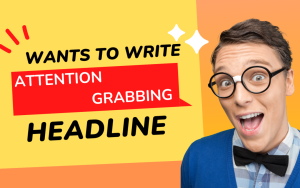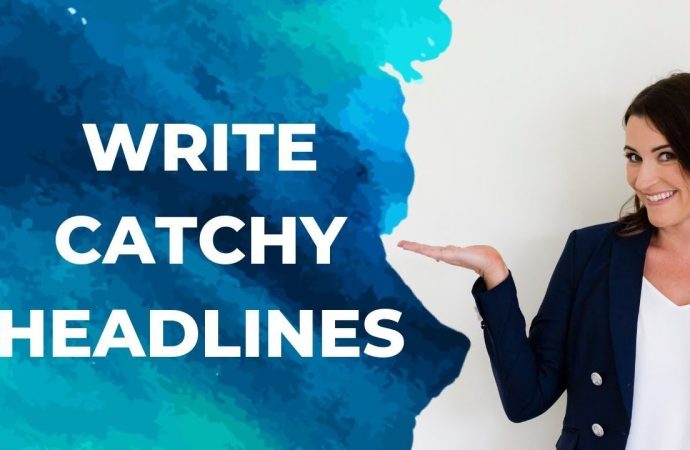Introduction When creating content, your headline is the first thing your audience will see. It can make or break whether they decide to click and read more. But how do you make your headlines stand out in a crowded online world? In this article, we’ll walk you through how to write captivating headlines that grab
Introduction
When creating content, your headline is the first thing your audience will see. It can make or break whether they decide to click and read more. But how do you make your headlines stand out in a crowded online world?
In this article, we’ll walk you through how to write captivating headlines that grab attention and help boost engagement. Whether you’re a blogger, marketer, content creator, or business owner, knowing how to craft the right headline is essential.
Why Headlines Matter

Image by: Yandex.com
Headlines are not just titles they are a powerful tool to draw readers in. Here’s why a good headline is so important:
- Grabs Attention: A headline is your first chance to catch a reader’s eye.
- Increases Click-Through Rates: A strong headline makes more people want to click and read your content.
- Sets Expectations: A clear headline tells the reader what they will get from your content.
Without a good headline, even the best content might be ignored. So, let’s dive into how to write the perfect headline!
Key Elements of Captivating Headlines

Image by: Yandex.com
Creating a headline that stands out requires a mix of creativity, strategy, and a little psychology. Here are the key elements of a captivating headline:
-
Clarity: A headline must be clear. The reader should instantly understand what your article is about.
-
Urgency: Words that create urgency, like “Now” or “Don’t Miss,” encourage readers to click right away.
-
Curiosity: A headline should make readers curious. It should give just enough information to spark their interest but leave them wanting to know more.
-
Emotion: Headlines that tap into emotions, such as excitement, fear, or happiness, are more likely to grab attention.
-
Value Proposition: A good headline clearly states what the reader will gain from the article. For example, “How to Write Captivating Headlines That Boost Engagement” tells the reader the benefit of reading.
-
SEO-Friendly: Headlines should be optimized for search engines. Using relevant keywords helps your content reach more people.
Tips for Writing Effective Headlines

Image by: Yandex.com
Here are some simple, yet powerful, tips to help you write headlines that will grab attention and increase clicks:
1. Use Numbers and Lists
Headlines with numbers are very effective. People like to know exactly what they will get. For example:
- “5 Simple Tips for Writing Better Headlines”
- “10 Headline Writing Tips to Increase Clicks”
2. Be Specific
Specific headlines work better than vague ones. Instead of a general title like “Writing Tips,” go for something more specific like, “How to Write SEO-Friendly Headlines That Drive Traffic.”
3. Keep It Short
While it’s important to be clear, keeping your headline short and to the point is key. Aim for 6-10 words. If it’s too long, it might get cut off in search results, and it could lose its punch.
4. Ask Questions
Asking a question can spark curiosity. For example:
- “Are You Writing Headlines That Get Clicked?”
- “Want to Write Captivating Headlines?”
5. Use Strong Words
Words that pack a punch can make your headline stand out. Words like “Secret,” “Proven,” or “Simple” make people want to click.
6. Test Your Headlines
Try different headlines and see which one works best. A/B testing is a great way to find out what your audience responds to most.
Common Mistakes to Avoid

Image by: Yandex.com
Here are a few common headline mistakes to watch out for:
- Being Too Vague: Don’t leave readers guessing. Instead of “Tips for Writers,” try “5 Headline Writing Tips You Need to Know.”
- Overusing Clickbait: Headlines that mislead or promise something untrue can damage your trust with readers.
- Forgetting Mobile Optimization: With more readers on mobile, make sure your headline is short and clear enough for small screens.
The Importance of Emotional Connection in Headlines
One of the key factors in creating captivating headlines is the emotional connection they can form with the reader. People are more likely to click on headlines that make them feel something—whether it’s excitement, curiosity, fear, or joy. Emotional headlines tend to stand out and grab attention because they tap into the reader’s feelings. For example, a headline like “This Simple Trick Will Change Your Life Forever” sparks curiosity and makes people want to learn more. By using strong emotional triggers, you can increase the chances of readers clicking on your article.
Using Numbers for Better Engagement
Including numbers in your headlines is another effective way to capture attention. People love lists because they promise clear, easy-to-read content. Headlines like “7 Easy Ways to Improve Your Writing” or “Top 5 Tips for Boosting Your Productivity” provide a sense of structure, which appeals to readers looking for quick, actionable advice. Numbers also make your content feel more organized and digestible. Using numbers in headlines is a simple and powerful strategy to increase engagement and attract more readers.
The Power of Curiosity
Curiosity is a powerful tool in headline writing. Headlines that tease interesting or surprising information can make readers want to click to satisfy their curiosity. For example, a headline like “You Won’t Believe What Happens Next” encourages the reader to click to find out more. This technique works well when the content offers unexpected insights or surprising facts. However, it’s important not to overdo it—your headline should still give a hint of what the article is about. Too much mystery can lead to disappointment if the content doesn’t live up to expectations.
The Role of Keywords in SEO-Friendly Headlines

Image by: Yandex.com
To make your headlines work even harder, it’s essential to use the right keywords. SEO-friendly headlines help your content appear in search engine results, making it easier for potential readers to find your article. By including relevant keywords, like “how to write effective headlines” or “attention-grabbing titles,” you improve your chances of ranking higher on search engines. But remember, the headline should still be natural and easy to read keyword stuffing can make it sound awkward and turn readers away. Balance is key when optimizing headlines for SEO.
How Testing Can Improve Your Headlines
One of the best ways to improve your headline writing skills is through testing. A/B testing allows you to try different headline versions and see which one performs better. By comparing how different headlines affect your click-through rates and engagement, you can learn what works best for your audience. Testing helps you understand what type of wording, tone, and structure attracts the most readers. Over time, this will enable you to craft more effective headlines that consistently drive traffic to your content.
Challenges in Writing Effective Headlines
Writing effective headlines comes with its challenges. One major challenge is balancing creativity with clarity. While you want your headline to be catchy and intriguing, it should also be clear enough to accurately reflect the content. Another challenge is keeping headlines short and to the point. With mobile devices being a primary way people read content, short headlines that can be easily read on small screens are essential. Finally, avoiding clickbait is another common issue. Misleading headlines may get clicks, but they can damage your credibility in the long run.
The Future of Captivating Headlines

Image by: Yandex.com
The future of captivating headlines looks bright. As digital content continues to grow, the demand for attention-grabbing headlines will only increase. With advances in AI and data analytics, it will become easier to predict what types of headlines perform best. Additionally, as more people consume content on mobile devices, optimizing headlines for mobile will become even more important. In the future, we can expect headlines to become even more personalized, tailored to individual reader preferences and interests.
Analyzing Headlines: What Works and What Doesn’t
To understand what makes a headline captivating, let’s look at some common types of headlines and analyze their effectiveness.
| Headline Type | Effectiveness | Why It Works |
|---|---|---|
| List-Based Headlines | High | Numbers promise quick, easy-to-read content. |
| How-To Headlines | High | Clear, actionable advice attracts people who want to learn. |
| Question-Based Headlines | Moderate | Sparks curiosity but can be less specific. |
| Emotional Headlines | High | People are more likely to click when a headline triggers emotion. |
| SEO-Friendly Headlines | Moderate | Helps content rank well in search but may be less attention-grabbing. |
| Urgency-Based Headlines | High | Creates a sense of urgency that encourages clicks. |
Catchy vs. SEO-Friendly Headlines
When writing headlines, it’s important to strike a balance between making them catchy and making them SEO-friendly. Below is a comparison between the two:
| Feature | Catchy Headline | SEO-Friendly Headline |
|---|---|---|
| Focus | Getting attention and sparking curiosity | Including keywords to rank in search engines |
| Tone | Fun, engaging, or intriguing | Clear and optimized for search engines |
| Length | Short and impactful | May be longer to include keywords |
| Effectiveness | Great for engaging readers and shares | Great for appearing in search results and getting clicks |
| Example | “The Secret to Writing Headlines That Get Clicked” | “How to Write SEO-Friendly Headlines That Boost Traffic” |
Conclusion
Writing captivating headlines is one of the most important skills for any content creator. A well-written headline grabs attention, increases click-through rates, and sets the tone for the entire article. By following the tips and strategies in this guide, you can create headlines that not only attract readers but also boost your content’s performance.
Remember, crafting the perfect headline takes practice. Keep testing different approaches and refining your skills. Soon, you’ll be writing headlines that draw in more readers and keep them engaged.
Call-to-Action
Want better headlines? Try these tips and share your best-performing headlines with us!
















